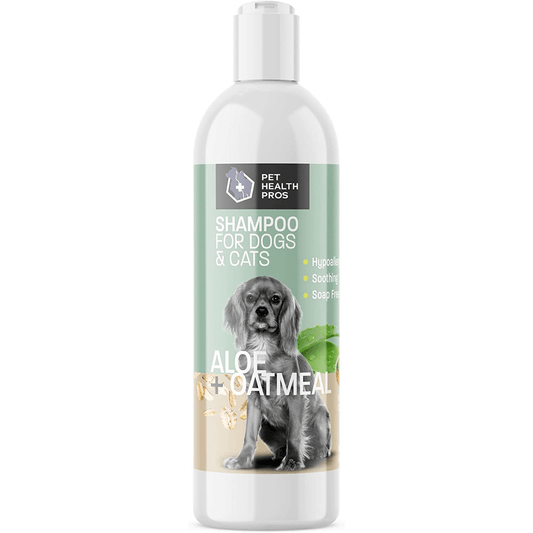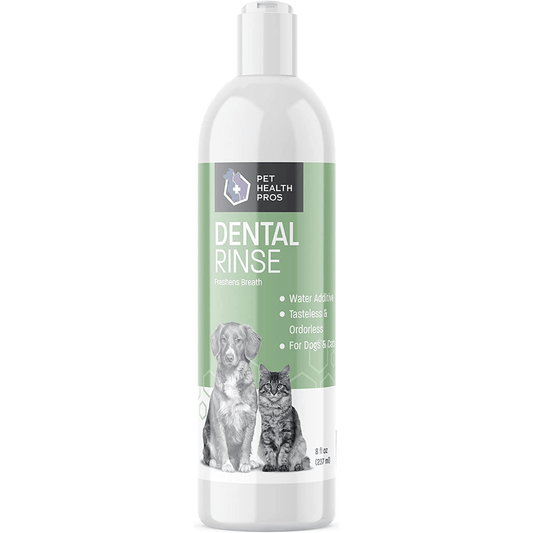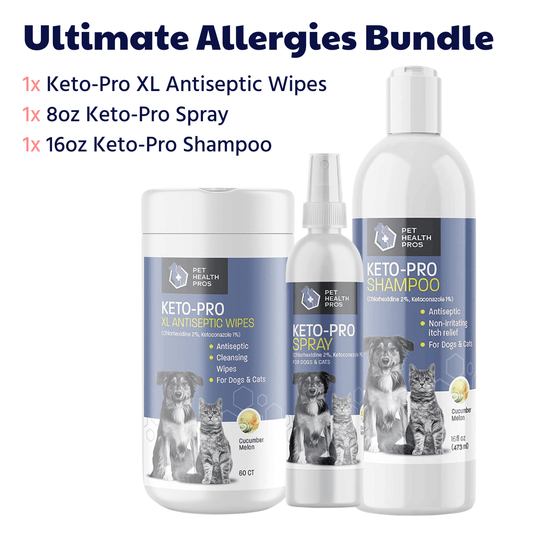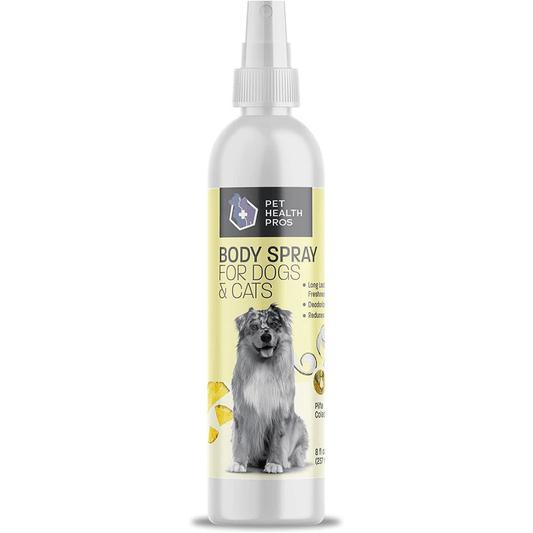If you've noticed your dog has yeast on paws, it can be concerning. Yeast infections in dogs can cause discomfort and lead to other health issues if not addressed. Understanding the symptoms, causes, and treatments is crucial for keeping your furry friend healthy and happy. In this article, we'll explore the signs of yeast infections, what triggers them, and how to effectively manage and prevent these pesky infections.
Key Takeaways
- Look for redness, itching, and bad smells as signs of yeast infections on your dog's paws.
- Common causes include allergies, moisture, and certain diets that can promote yeast growth.
- Diet plays a big role, with high-carb foods and allergies often contributing to yeast overgrowth.
- Environmental factors like humidity and poor hygiene can worsen yeast issues.
- Treatments may include topical antifungal creams, medicated shampoos, and dietary changes.
Identifying Symptoms Of Yeast Infections On Dog Paws
Okay, so you think your dog might have a yeast infection on their paws? It's pretty common, actually. Here's what to look for. Sometimes it's super obvious, other times it's more subtle, but knowing the signs can help you get your furry friend some relief.
Redness And Inflammation
One of the first things you might notice is redness. I mean, it's hard to miss, right? The skin between their toes or on the pads of their paws might look irritated and inflamed. It can be localized, or it can spread a bit. If it looks angry, that's a good sign something's up. This redness is usually a primary indicator of irritation caused by the yeast overgrowth.
Itching And Discomfort
Watch your dog. Are they constantly licking or chewing at their paws? That's a big clue. Yeast infections are itchy, like, REALLY itchy. They might also rub their paws on the carpet or furniture to try and get some relief. If they're acting like their paws are bothering them, pay close attention. It's their way of telling you something's not right. I've seen dogs get so fixated on licking that they create sores, so it's important to catch it early.
Foul Odor
Okay, this one might be a little gross, but it's important. Yeast infections often have a distinct, unpleasant odor. Some people describe it as a musty or cheesy smell. If you pick up their paw and get a whiff of something funky, that could be yeast. It's not always super strong, but if you're paying attention, you'll probably notice it. Trust your nose on this one!
If you notice any of these symptoms, it's a good idea to take a closer look at your dog's paws. Early detection can make treatment a whole lot easier and prevent the infection from getting worse. And remember, when in doubt, a vet visit is always a good idea.
Common Causes Of Yeast Overgrowth In Dogs
So, your dog's paws are yeasty? It's a pretty common problem, and usually, it's not just a random thing. There are often underlying reasons why yeast decides to throw a party on your dog's paws. Let's look at some of the usual suspects.
Allergies And Sensitivities
Allergies are a big one. Just like us, dogs can have allergies to all sorts of things. These allergies can mess with their skin's natural defenses, making it easier for yeast to grow. It could be something in their food, pollen in the air, or even something they touch. When a dog has an allergic reaction, their skin can become inflamed and itchy, creating the perfect environment for yeast to thrive. It's like the allergy sets the stage, and the yeast walks right in.
Moisture And Humidity
Think about it: yeast loves damp places. If your dog's paws are constantly wet, maybe from licking them a lot, walking in wet grass, or not being dried properly after a bath, you're basically rolling out the welcome mat for yeast.
Dietary Factors
What your dog eats can really affect their overall health, including their skin. Diets high in sugar or simple carbs can feed yeast, making an overgrowth more likely. Also, some dogs might have sensitivities or allergies to certain ingredients in their food, which, as we talked about, can lead to skin problems and yeast infections. It's all connected, you know?
The Role Of Diet In Yeast Infections
Okay, so, diet and yeast infections? It's a thing. I didn't really think about it much until my own dog started having issues. Turns out, what they eat can really mess with the yeast balance in their bodies, especially on their paws. It's not always super obvious, but it's worth paying attention to.
High-Carbohydrate Diets
Diets that are high in carbs can be a big problem. Yeast loves sugar, and carbs break down into sugar. So, if your dog is eating a lot of food with grains, potatoes, or even some fruits, it could be feeding the yeast and making the infection worse. I started looking at the ingredients in my dog's food, and wow, there were carbs everywhere! Switching to something with less filler made a difference.
Food Allergies
Food allergies are another sneaky culprit. Sometimes, it's not the yeast itself, but the allergic reaction that weakens your dog's immune system. This makes them more prone to yeast overgrowth. Common allergens include beef, chicken, dairy, and wheat. It can be tricky to figure out what they're allergic to, but an elimination diet can help. Basically, you switch to a very simple diet and then slowly reintroduce foods to see what causes a reaction.
Nutritional Deficiencies
If your dog isn't getting all the nutrients they need, their immune system can suffer. A weak immune system can't fight off yeast as effectively. Make sure you're feeding them a balanced diet with enough vitamins and minerals. Sometimes, adding a supplement can help, but definitely talk to your vet first. They can do blood tests to see if there are any specific deficiencies you need to address.
I switched my dog to a grain-free food with added probiotics, and it seemed to help a lot. It's not a cure-all, but it definitely made a difference in managing the yeast on his paws. It's all about finding the right balance and figuring out what works best for your dog.
Environmental Factors Contributing To Yeast Growth
So, you're probably wondering what's in your dog's environment that could be making those yeast infections on their paws so persistent. Well, it's not just one thing, but a combination of factors that can create the perfect breeding ground for yeast. Let's break it down.
Humidity And Wet Conditions
Yeast loves moisture, plain and simple. If your dog's paws are constantly damp, whether from walking in wet grass, puddles, or just not being dried properly after a bath, you're basically rolling out the welcome mat for yeast to thrive. Think of it like this: a warm, damp environment is like a tropical vacation for yeast.
Poor Hygiene Practices
Not keeping your dog's paws clean can also contribute to yeast overgrowth. Dirt, debris, and even leftover food particles can get trapped between their toes, providing a feast for yeast. Regular cleaning is key, but it's something a lot of us forget about in our busy lives.
Exposure To Allergens
Allergens in the environment, like pollen, mold, and dust mites, can trigger allergic reactions in dogs. These reactions can lead to excessive licking and chewing of the paws, which introduces moisture and damages the skin, making it more susceptible to yeast infections. It's a vicious cycle, really.
Keeping your dog's environment clean and dry is a big step in preventing yeast infections. Simple things like wiping their paws after walks and making sure their bedding is clean can make a huge difference. It's all about creating an environment that's less inviting for yeast to set up shop.
Effective Treatments For Yeast Infections On Dog Paws
So, your dog's paws are dealing with a yeast infection? It's a pretty common problem, and thankfully, there are several things you can do about it. Let's explore some effective treatments to get those paws back in shape.
Topical Antifungal Treatments
Topical treatments are often the first line of defense. Antifungal creams and sprays can be applied directly to the affected areas. Look for products containing ingredients like miconazole or ketoconazole. I've had good luck with these, but it's important to apply them consistently, usually one to two times daily, after cleaning and drying the paws thoroughly. Make sure your dog doesn't lick it off immediately!
Medicated Shampoos
Medicated shampoos can be a great way to treat yeast infections, especially if they're widespread or recurring. These shampoos typically contain antifungal agents that help kill the yeast and reduce inflammation. When using a medicated shampoo, follow these steps:
- Wet your dog's paws thoroughly.
- Apply the shampoo and lather well.
- Let it sit for the recommended time (usually 5-10 minutes).
- Rinse thoroughly and dry the paws completely.
I usually do this 2-3 times a week until I see improvement.
Dietary Adjustments
What your dog eats can play a big role in yeast infections. Sometimes, dietary changes can make a significant difference. Consider these adjustments:
- Reduce Carbohydrates: Yeast thrives on sugar, so lowering your dog's carb intake can help.
- Consider Probiotics: Adding probiotics to your dog's diet can help balance the gut flora and boost their immune system.
- Eliminate Potential Allergens: Food allergies can contribute to yeast overgrowth, so consider a food elimination diet to identify any triggers.
I switched my dog to a grain-free diet and added a daily probiotic supplement, and it really helped clear up his recurring yeast infections. It might take some trial and error, but it's worth exploring.
Preventing Yeast Infections In Dogs
It's way easier to stop a problem before it starts, right? Same goes for yeast infections on your dog's paws. Here's how to keep those paws healthy and yeast-free.
Regular Paw Cleaning
Think of it like washing your hands, but for your dog's feet. After walks, especially in damp areas, give those paws a good cleaning. You don't need anything fancy – just some warm water and maybe a mild, dog-friendly soap. Make sure to get in between the toes, as that's where yeast loves to hang out.
Maintaining Dryness
Yeast thrives in moist environments, so keeping your dog's paws dry is super important. After cleaning or if they've been out in the rain, thoroughly dry their paws with a towel. You can even use a low-heat hair dryer for a few seconds, but be careful not to burn them.
Monitoring Diet
What your dog eats can really affect their overall health, including their susceptibility to yeast infections.
- Make sure they're getting a balanced diet with quality ingredients.
- Talk to your vet about whether a lower-carbohydrate diet might be beneficial, as yeast feeds on sugar.
- Consider adding a probiotic to their food to promote healthy gut bacteria, which can help keep yeast in check.
Keeping an eye on your dog's diet and making sure they're getting the right nutrients can go a long way in preventing yeast overgrowth. It's all about creating an environment in their body that doesn't encourage yeast to flourish.
When To Consult A Veterinarian
It's easy to try a bunch of home remedies when your dog's paws are itchy, but sometimes, you just need to call in the pros. Knowing when to see a vet can save your dog from a lot of unnecessary discomfort and prevent a minor issue from turning into something way worse. I'm no vet, but here's what I've learned about when it's time to book that appointment.
Persistent Symptoms
If you've been trying over-the-counter treatments or home remedies for a week or two, and you're still seeing the same old symptoms, it's time to get a vet's opinion. Persistent redness, itching, or that funky smell just won't go away on their own sometimes. It could be a sign that the yeast infection is more stubborn than you thought, or that something else is going on entirely. Don't just keep throwing stuff at the wall hoping something sticks; a vet can properly diagnose the problem and get you on the right track. If you notice any underlying health issues, it's best to consult with a vet.
Severe Discomfort
Okay, so your dog is scratching a bit. That's one thing. But if they're constantly licking, chewing, or seem really bothered by their paws, that's a whole different level of discomfort. If your dog is in obvious distress, like whimpering or having trouble walking, don't wait. Get them to the vet ASAP. Severe discomfort can also lead to self-inflicted injuries, which just makes everything worse.
Underlying Health Issues
Sometimes, yeast infections are a symptom of a bigger problem. If your dog has a history of allergies, a weakened immune system, or some other health condition, they might be more prone to yeast overgrowth. Plus, some medications can also mess with their body's natural balance and make them more susceptible to infections. If you know your dog has other health issues, it's always a good idea to talk to your vet about any new or worsening symptoms, including those nasty yeast infections. They can help you figure out if it's all connected and come up with a plan to tackle everything at once.
If your pet is acting strange, not eating, or showing signs of pain, it might be time to see a vet. Don’t wait too long, as early help can make a big difference in your pet's health. For more tips on when to seek veterinary care, visit our website today!
Final Thoughts on Yeast Infections in Dogs' Paws
In conclusion, dealing with yeast infections on your dog's paws can be a bit of a hassle, but understanding the causes can really help. Whether it's allergies, moisture, or something else, knowing what to look for is key. Regular grooming and keeping their paws dry can make a big difference. If you notice persistent issues, don’t hesitate to reach out to your vet for advice. They can provide the right treatment and help you get your furry friend back to their happy self. Remember, a little prevention goes a long way!
Frequently Asked Questions
What are the signs of a yeast infection on my dog's paws?
You might notice redness, swelling, itching, and a bad smell coming from your dog's paws.
What causes yeast infections in dogs?
Common causes include allergies, too much moisture, and certain foods.
How does my dog's diet affect yeast infections?
A diet high in carbs or certain food allergies can lead to yeast overgrowth.
Can the environment make my dog more prone to yeast infections?
Yes, living in humid areas or not keeping your dog's paws clean can increase the risk.
What treatments are available for yeast infections on dog paws?
You can use antifungal creams, medicated shampoos, and make dietary changes.
How can I prevent yeast infections in my dog?
Regularly clean your dog's paws, keep them dry, and watch their diet.








